Just In
- 3 hrs ago

- 3 hrs ago

- 7 hrs ago

- 13 hrs ago

Don't Miss
- Sports
 Who Won Yesterday's IPL Match 34? LSG vs CSK, IPL 2024 on April 19: KL Rahul Stellar Batting Show Decimate Chennai Bowling
Who Won Yesterday's IPL Match 34? LSG vs CSK, IPL 2024 on April 19: KL Rahul Stellar Batting Show Decimate Chennai Bowling - Finance
 Rs 17/Share Dividend: Record Date On April 26; Buy The ICICI Group Stock To Be Eligible?
Rs 17/Share Dividend: Record Date On April 26; Buy The ICICI Group Stock To Be Eligible? - Movies
 Chief Detective 1958 Episode 2 OTT Release Date, Time, Platform: When & Where To Watch? What To Expect? DEETS
Chief Detective 1958 Episode 2 OTT Release Date, Time, Platform: When & Where To Watch? What To Expect? DEETS - News
 Chinese President Xi Jinping Orders Biggest Military Reorganisation Since 2015
Chinese President Xi Jinping Orders Biggest Military Reorganisation Since 2015 - Education
 Exam Pressure Does Not Exist; Studying Punctually is Crucial; Says Aditi, the PSEB 2024 Topper
Exam Pressure Does Not Exist; Studying Punctually is Crucial; Says Aditi, the PSEB 2024 Topper - Automobiles
 Suzuki Swift Hatchback Scores 4 Star Safety Rating At JNCAP – ADAS, New Engine & More
Suzuki Swift Hatchback Scores 4 Star Safety Rating At JNCAP – ADAS, New Engine & More - Technology
 Dell Introduces AI-Powered Laptops and Mobile Workstations for Enterprises in India
Dell Introduces AI-Powered Laptops and Mobile Workstations for Enterprises in India - Travel
 Journey From Delhi To Ooty: Top Transport Options And Attractions
Journey From Delhi To Ooty: Top Transport Options And Attractions
Glue Ear: Causes, Symptoms, Treatment And Home Remedies
In medical terms, glue ear is known as otitis media with effusion or OME. It is basically the accumulation of a sticky, thick fluid in the middle ear, behind the eardrum. The fluid is more or less glue-like in consistency and hence the condition has been named as glue ear. Glue ear can affect one or both of the ears in people of all ages, but children and toddlers are especially at risk of developing the condition. As a result, any affected person suffers from hearing difficulty and other problems associated with it.
What Are The Causes Of Glue Ear In Toddlers?
During an ear infection, fluid gets collected in the middle ear. Usually, when the infection reverts, the fluid drains back within weeks, but sometimes the fluid stays in the middle ear and doesn't drain even after more than a couple of weeks. This fluid can be thin or thick in consistency. If the fluid that stays back is thick and sticky, it is then called glue ear.

It is usually the eustachian tube which connects the inner part of the ear to the back of the throat and it is also through this tube that the fluid drains. But, due to a variety of reasons, the eustachian tubes may get partially blocked, as a result of which the fluid starts to get collected in the middle ear.
The reason children are more prone to suffer from glue ear is because of how their eustachian tubes are shaped. Small kids may have shorter, more horizontal, and straighter tubes which can also be floppy and thereby make them more vulnerable to infections and fluid collections.

The immune system in kids is also comparatively weaker and needs more time to ward off infections. Children who are exposed to allergens and smoke have more chances of developing OME.
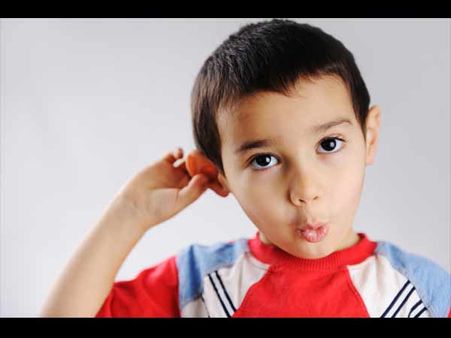
When Does Glue Ear Become A Problem In Children?
Kids who have glue ear or OME usually suffer from a partial hearing impairment or difficulty in hearing. Even though it might not sound like too serious a problem, it can actually have bad consequences. Due to the difficulty in hearing, children may speak more quietly and may also shy away from conversations due to their inability to fathom the words properly.
They may also go on to encounter problems in speech and language development as a result of the glue ear condition. In addition to that, if your child's glue ear keeps recurring frequently, it is best to see a doctor as soon as possible. Proper diagnosis and timely treatment are the only way out.
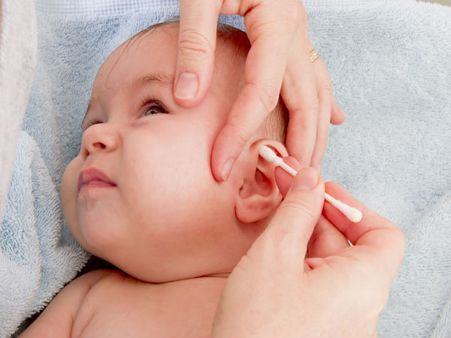
What Are The Symptoms Of Glue Ear In Children?
More often than not, it may be a little tricky to detect when your child has OME or glue ear. This is because children with glue ear do not necessarily become sick as is the case with most other diseases, and the only major symptoms of glue ear could be hearing loss with difficulty in speech.
Moreover, the extent of hearing loss could be different in different kids. Some children may constantly ask you to repeat things, some may pay no heed to what you're telling them, others may misunderstand or mishear what is said, and some others develop difficulties in learning languages and communication.
Reduced hearing instead causes other behavioural and/or cognitive problems. Glue ear isn't usually an extremely painful condition, although there are reports which suggest that children suffering from the same had disturbed sleep patterns.

How Common Is Glue Ear In Toddlers?
Children are more vulnerable to suffer from glue ear because of the anatomy of their ears and it also has been labelled as one of the most common ear infections in little kids. According to the UK NDCS or National Deaf Children's Society, glue ear or otitis media is very common in 8 out of 10 children experiencing it before the age of 10. Even though it is rare in newborn babies, OME is quite common among kids about the age of 2.

How Is Glue Ear Diagnosed?
Diagnosis of glue ear at home can be difficult, except if the symptoms are carefully noted. There are certain changes that doctors may look for while examining your child for glue ear. They may look for air bubbles on the surface of the eardrum, fluid behind the eardrum, and also monitor the dullness and mobility of the eardrum.
The doctor may ask your child to undergo an audiometer or hearing test based on which the professional can detect any form of hearing loss. He/she will also use an acoustic otoscope - an instrument used to look into your child's ear canal and eardrum.
Yet another method is tympanometry which is considered more accurate in detecting OME. This test not just helps determine the consistency and the amount of the liquid collected in the middle ear, but it also helps doctors monitor the movements of the eardrum properly.

How Can Glue Ear Be Treated?
Most cases of glue ear in children heal with time and without treatment. If your child has glue ear and yet doesn't have a problem in hearing, then the doctor may prescribe regular checkups spanning 3 months to make sure things are all right. The problem may gradually get solved as your child's eustachian tubes mature.
Another treatment method is using grommets or tympanostomy tubes which are basically thin tubes inserted into the eardrums to treat middle ear infections. These are used when the hearing difficulty is that significant. Grommets are placed at the opening of the eardrum and they gradually fall out on their own as the child's ears grow in size. Before they fall out, they stay in position for periods ranging from 6 months to one year or more.
A fallen-out grommet doesn't necessarily mean that your kid's glue ear has been solved or that it won't come back again. In some cases, new grommets may be required to continue to treat after the old ones have fallen out.
What Are The Home Remedies For Treating And Preventing Glue Ear In Toddlers?
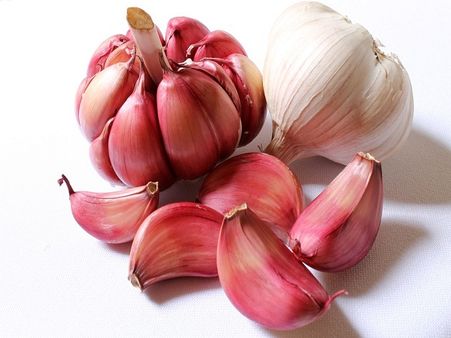
1.) Garlic
Also known as Allium sativum, this bulbous vegetable has anti-microbial properties which can help fight infections. To use garlic in an effective manner against OME, just crush one garlic clove and use the extract with your child's ear drops.

2.) Essential oil
A research conducted to study the effect of essential oils on OME found out that essential oils, in fact, are a very effective method of treatment for glue ear. For this purpose, you can use peppermint oil, lavender oil or tea tree oil.
Remember that essential oils should be used externally only. Also, before using them, you must dilute them with the use of carrier oils like olive or coconut oil. Use a cotton ball to wipe the essential oil of your choice on the area around the opening of the ear and leave it overnight.

3.) Nose balloons
This process is also called autoinflation and is not suitable for kids of age 4 and above. It involves the child blowing the balloon by blowing air through his or her nose. A 2015 study conducted into the same topic found out that nasal balloons are a safe and effective remedy for glue ear.
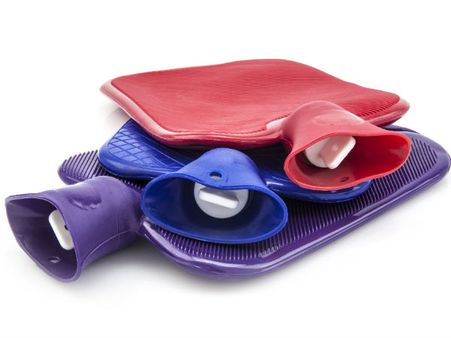
4.) Hot water bag or bottle
Hot water bags and bottles have been used for treating cramps and muscular pain since time immemorial. They work well for the pain caused by glue ear as well. Just take a cloth, wrap it around your hot water bottle, and hold it in place near the affected ear.

5.) Stop smoking
Ear infection in kids can be closely related to smoking. Studies have found out that even passive smoking (children growing up with parents or acquaintances who smoke) is enough to cause ear infections in children.
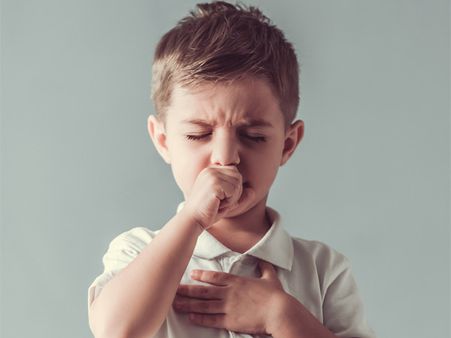
6.) Common allergens
Apart from smoke, common allergens like dust and pollen can also cause glue ear in toddlers and little kids. This is because allergens lead to inflammation in the eustachian tubes. Keep your kid's surroundings dust free and ensure that their food doesn't have any allergens as well.
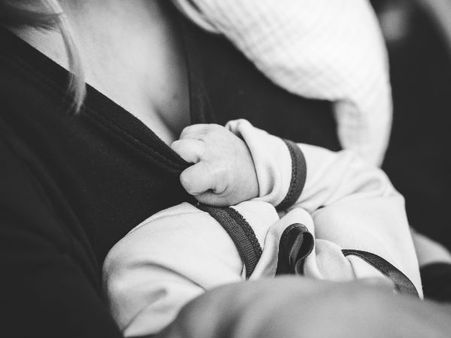
7.) Breastfeeding
According to different studies and UK National Deaf Children's Society, breastfeeding can help reduce the incidence of glue ear in toddlers. So breastfeeding your infants for at least the first four months would be a good preventive measure against glue ear.

Glue ear or OME in toddlers is a common yet treatable condition with proper diagnosis and treatment. If you suspect that your child has glue ear, take them to a doctor to analyse how serious it is. It is also of utmost importance to give your child with glue ear a little more attention as their difficulty in hearing can be a very relentless thing for them to handle.
-
 pregnancy parentingWhite Lung Syndrome: What Are The Symptoms Of The Disease Rampant In China? How Does It Spread?
pregnancy parentingWhite Lung Syndrome: What Are The Symptoms Of The Disease Rampant In China? How Does It Spread? -
 healthWorld HIV/AIDS Day: What Is The Difference Between HIV and AIDS?
healthWorld HIV/AIDS Day: What Is The Difference Between HIV and AIDS? -
 healthDengue 101: Causes, Symptoms, Risks, Complications, Treatment, Prevention, Diet And More
healthDengue 101: Causes, Symptoms, Risks, Complications, Treatment, Prevention, Diet And More -
 healthDiarrhoea 101: Causes, Symptoms, Risks, Complications, Treatment, Prevention, Diet And More
healthDiarrhoea 101: Causes, Symptoms, Risks, Complications, Treatment, Prevention, Diet And More -
 health'Epileptic Nightmare' of Neurocysticercosis: The Hidden Epidemic of Parasites Causing Epilepsy
health'Epileptic Nightmare' of Neurocysticercosis: The Hidden Epidemic of Parasites Causing Epilepsy -
 pregnancy parentingLife-Threatening Risk During Pregnancy: Sepsis Can Harm Both Mother and Baby
pregnancy parentingLife-Threatening Risk During Pregnancy: Sepsis Can Harm Both Mother and Baby -
 healthStay Informed: The Hidden Dangers of Legionnaires' Disease and How to Prevent It
healthStay Informed: The Hidden Dangers of Legionnaires' Disease and How to Prevent It -
 healthMyths vs Facts: Can A Single Mosquito Bite Really Give You Dengue?
healthMyths vs Facts: Can A Single Mosquito Bite Really Give You Dengue? -
 healthTop 5 Reasons For Vaginal Rash: When You Should See A Doctor
healthTop 5 Reasons For Vaginal Rash: When You Should See A Doctor -
 healthCan Inhaling Menthol Help Improve Memory For Alzheimer's Disease?
healthCan Inhaling Menthol Help Improve Memory For Alzheimer's Disease? -
 healthWorld Vitiligo Day 2023: Are You At Risk Of Developing Vitiligo?
healthWorld Vitiligo Day 2023: Are You At Risk Of Developing Vitiligo? -
 beautyFather's Day 2023: Stretch Marks In Men, Causes And Treatments
beautyFather's Day 2023: Stretch Marks In Men, Causes And Treatments


 Click it and Unblock the Notifications
Click it and Unblock the Notifications



